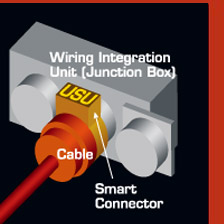|
 |  |  | NSF support for Engineering Better Security & Safety includes • Developing tools and methods to enhance the structural integrity of buildings, infrastructure, and lifeline systems in case of earthquakes, bombings, and other natural and man-made disasters • Designing devices and approaches to facilitate rapid response to emergencies, such as robots that explore and shore up collapsed buildings and new technologies to limit cascading failures in electric power networks • Developing devices and systems to detect biological and chemical threats, such as “labs on a computer chip,” or threats to critical equipment and infrastructure, such as sensors to detect faulty wiring in airplanes |  |  |  |  | Imagine the airplane of the future . . .
with “smart wiring” systems that tell pilots and mechanics when old, brittle, fraying wires need to be replaced and the precise location of the trouble spot, before fires occur—making flying safer and saving hundreds of millions of dollars in aircraft maintenance costs. |  |  | Cynthia Furse of the University of Utah is solving one of the airline industry’s most serious safety problems: faulty wiring. Airplanes are now flying twice as long as the anticipated life span when they were originally designed and built. While most aircraft components are replaced over time, wiring is not, because it’s generally inaccessible and thus too difficult and expensive to replace. Existing technologies for detecting wiring faults provide only a partial solution, since they can’t specify a precise location for the fault and can’t function while the plane is flying, creating costly delays in which aircraft sit idle while technicians work for hours or days to locate and repair problems. With support from NSF-ENG, Furse and her team have created a “smart connector”—a computer sensor and electrodes that combine to form an automated testing system that eventually will be embedded inside aircraft wiring systems. To be commercially viable, smart connectors will have to be inexpensive and light, since a commercial jet will contain 800 to 1,500 of them. Furse predicts that handheld testers for the system will be ready for the commercial market by 2005, and a fully embedded version could be ready within one or two years after that. |  |
This “smart connector,”
created with support from
NSF-ENG, will enable pilots to
run a safety check of airplane
wiring just before takeoff
and to monitor wiring continuously
during flight.
|  |  | |
|


